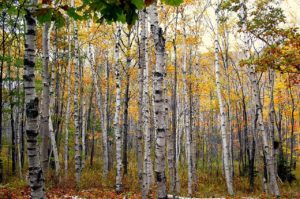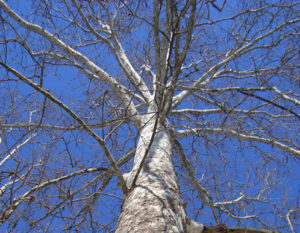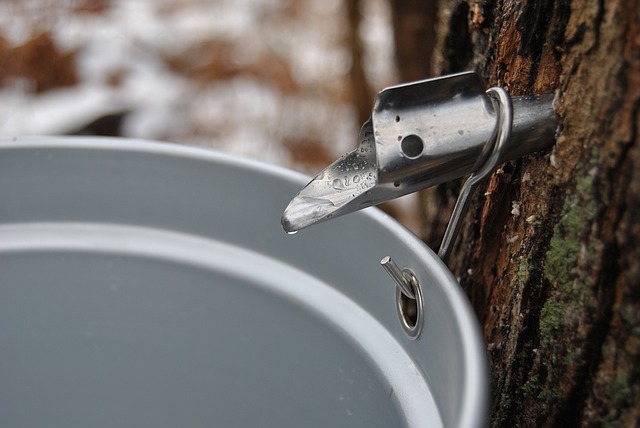Making the Other Syrups; Birch, Walnut and Sycamore

We aren’t all fortunate enough to live in a grove of maple trees from which we can tap our own maple syrup, but did you know that there are other trees that you can also make syrup from. Before Canadians and North Easterners shout me down, yes, maple is the gold standard but options are good! In fact, there are dozens of species of trees around the world that can be used to tap and make syrup. We’ll be focusing on the prime North American options: Birth, Walnut and Sycamore.
All syrup is, essentially, just condensed tree sap but if you’re going to try this, you have to keep your palette open to new experiences and flavors.
A Word on Flavor
Walnut, unsurprisingly, has a nutty taste but sweet enough to use like maple syrup. Birch is more savory than maple and has spicy undertones that can make it quite complex. In older recipes, you may find it used as a component in salad dressings, meat glazes and tonics. And sycamore can almost pass for a mild honey with the lingering flavor of butterscotch.
Tree Species
Ultimately, your specific location and geography will determine your options, but here are some basic guides to set expectations:
 Birches: Any birch in North American will work, but the gray and paper birch are probably the best candidates for flavor. The Gray Birch (Betula populifolia) ranges from southeastern Ontario east to Nova Scotia, and south to Pennsylvania and New Jersey, with disjunct populations in Indiana, Virginia, and North Carolina. The Paper Birch (Betula papyrifera) is found in northern US, south to Pennsylvania and Washington, with small isolated populations further south in mountains to North Carolina, New Mexico, and Colorado.
Birches: Any birch in North American will work, but the gray and paper birch are probably the best candidates for flavor. The Gray Birch (Betula populifolia) ranges from southeastern Ontario east to Nova Scotia, and south to Pennsylvania and New Jersey, with disjunct populations in Indiana, Virginia, and North Carolina. The Paper Birch (Betula papyrifera) is found in northern US, south to Pennsylvania and Washington, with small isolated populations further south in mountains to North Carolina, New Mexico, and Colorado.
 Walnut: The walnut ranges a bit further than the birch in North America, especially as escapees from commercial cultivation. The trade off is that they require a lot more raw sap to reduce to syrup so avoid widely spread trees to make your effort efficient as possible.
Walnut: The walnut ranges a bit further than the birch in North America, especially as escapees from commercial cultivation. The trade off is that they require a lot more raw sap to reduce to syrup so avoid widely spread trees to make your effort efficient as possible.
Tapping a walnut may reduce its nut production, so if you are harvesting nuts as well, consider tapping only those trees that are less prolific or that have historically produced less tasty nuts.
 Sycamore: In North America, the native sycamore goes by several names, but enjoys a wide range in the Eastern United States west to the Mississippi River. Sadly, it is even less prolific sap producer than the Walnut, but hopeful it makes up for that in numbers and accessibility in your area.
Sycamore: In North America, the native sycamore goes by several names, but enjoys a wide range in the Eastern United States west to the Mississippi River. Sadly, it is even less prolific sap producer than the Walnut, but hopeful it makes up for that in numbers and accessibility in your area.
Tapping Basics
- Choose trees with a minimum of 8″ diameter and a healthy/wide crown.
- Avoid trees or trunk locations that show signs of infection or wound.
- Be sure to sterilize all your gear (drill bits, taps, etc) that will come in contact with the tree to prevent infections.
- Place taps at 4-5′ above the ground. 2″ deep is sufficient for walnuts trees, while 1.5″ for birches and sycamores with their thinner barks.
- Only place one tap per tree to avoid over taxing or damaging the tree. Drill your tap hole upwards at a 15 degree angle to encourage flow.
- Cover your collection buckets and check them regularly to avoid contamination or spoilage.

Filtering & Processing
Your first heating isn’t to concentrate the sap but rather to filter impurities. Disposable coffee filters, fine cheese cloth or reusable honey filters will all work for a small scale hobbyists. Continue to heat the filtered sap to reduce its moisture content. You can use a hydrometer to be precise, or eyeball it, but if you do remember than hot syrup will seem thinner than the final, cooled product.
Observe all the canning safety basics when bottling your syrup. Unlike honey, syrup can “go off”. In any case, syrup should be used within two years of canning.
Final step, enjoy!
Leave a Reply